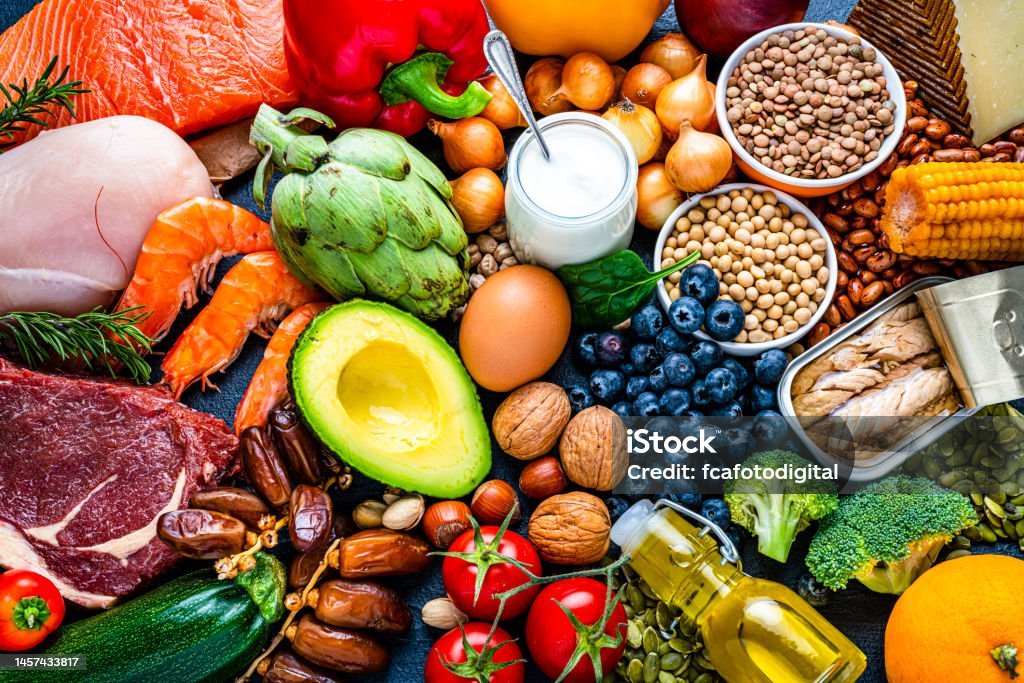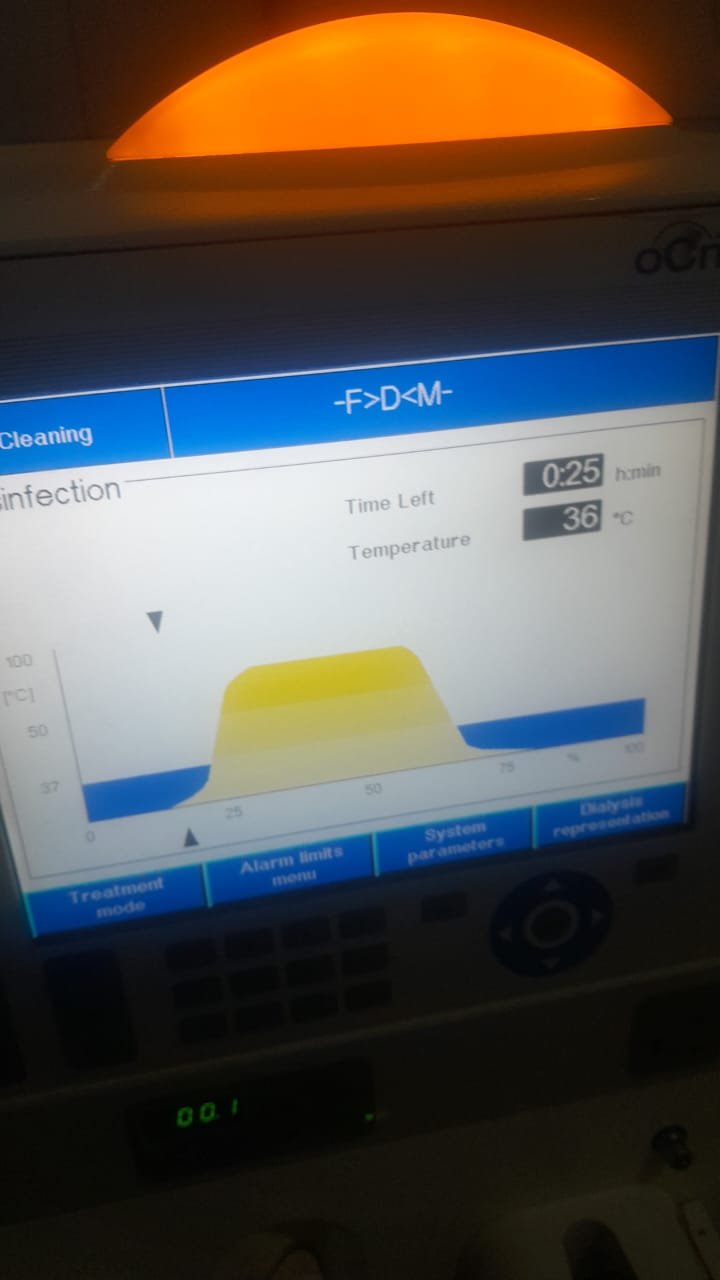Introduction Nutrition is the study of how food impacts the health, growth, and functioning of the body. It is necessary to sustain life, promote growth, and prevent disease, and the food we eat provides nutrients to our body for a diverse array of biological functions from energy metabolism to immune system function. Possible personal description of our busy world of nutrition between family, friends, work, and overall today’s world – nutrition is evermore critical.
Nutrition is defined as the process by which our bodies use food.Food is comprised of substances known as nutrients.
There are six main types of nutrients
Carbohydrates – provide energy for daily activities.
Proteins – involved in building and repairing tissues.
Fats – provide the structure for our cells and long-lasting energy to our bodies.
Vitamins – help to regulate processes in our bodies.
Minerals – help with many functions of our bodies including bone health, oxygen transport.
Water – is essential for hydration, regulating temperature, and eliminates waste.Each nutrient has its own purpose in the growth and.
Carbohydrates are categorized based on chemical structure and their digestibility or absorption. Here is an overview of the main types of carbohydrates:
🔹 1. Based on Structure A. Simple Carbohydrates also referred to as sugars and composed of either one or two sugar units
monosaccharides (1 sugar unit):Glucose – the main energy source for the bodyFructose – found in fruits, honey Galactose – found in milk (part of lactose)
🔹2. Based on Digestibility
1. Digestible Carbohydrates: provide energy (4 kcal/g), include sugars and starches 2. Non-Digestible Carbohydrates (Dietary Fibre): and are not broken down in the small intestine. Non-digestible carbs include: a. Non soluble (e.g. wheat bran) – moves bowels b. Soluble (e.g. oats and legumes) – lowers cholesterol, blood sugar c. Resistant starch – nourishes friendly gut bacteria (ex. in green bananas, cooled potatoes).
🔹 3. Based on Glycemic Index (GI)1. High GI (70 or more): quickly spikes blood sugar→ ex. white bread, sugary drinks, cornflakes 2. Medium GI (56–69): moderate effect→ ex. brown rice, sweet corn 3. Low GI(55 or less): slow and steady→ ex. lentils, oats, most fruits and veggies
Proteins: An Overview
Proteins are macronutrients that are made of amino acids, which are components of your body’s cells, enzymes, hormones, and tissues. Proteins also play a major role in muscle repair, immunity, metabolism, and more.🧩 Protein Classification Proteins can be classified several different ways based on their composition, functions and nutritional properties:
🔹1. Composition A. Simple Proteins yield only amino acids when hydrolyzed ex. Albumins (egg white), Globulins (plasma)B. Conjugated Proteins have a non-protein component (prosthetic group)ex. glycoproteins – (e.g. mucins) lipoproteins – (e.g. in plasma) vis. hemoproteins (e.g. hemo- goblin) C. Derived Proteins from simple or conjugated proteins via partial hydrolysis ex. peptides, proteoses, peptones.
🔹 2. By Function Function Examples Role Structural Collagen, keratin Skin, hair, nails, and connective tissue Enzymatic Amylase, lipase, protease Catalyze biochemical reactions Transport Hemoglobin, albumin Carry oxygen and nutrients Hormonal Insulin, growth hormone Regulation of metabolism, growth, and glucose levels Immune Antibodies (immunoglobulins) Attack pathogens Contractile Actin, myosin Muscle movement Storage Ferritin, casein Storage of iron or amino acids— 🔹 3. By Nutritional Value A. Complete Proteins.One that contains all 9 essential amino acids.Examples: eggs, milk, meat, fish, quinoa and soy B. Incomplete Proteins.One that is missing one or more essential amino acids.Examples: Most plant proteins (rice, beans, wheat) C. Complementary Proteins.Two incomplete proteins that combined provide all essential amino acids.Examples: Rice + beans, Peanut butter + whole-grain bread
Fats (lipids) are a needed macronutrient for energy, structural component of cells, aiding absorption of fat-soluble vitamins (A, D, E, K), production of hormones, brain function, and reduction of inflammation.
🧩 Classification of Fats Fats can be classified by their chemical structure as well as their health implications:
🔹 1. Chemical Structure A. Saturated Fats (SFA)No double bond meaning they are fully “saturated” with hydrogen Generally solid at room temperature; Found in:Animal fats (butter, cheese, red meat)Coconut oil, palm oil> 🧠 Too much can increase LDL (“bad”) cholesterol therefore increasing your risk of heart disease.B. Unsaturated Fats Contains one or more double bonds — healthier for the heart.
1. Monounsaturated Fats (MUFA)One double bond; Found in:Olive oil, avocados, almonds, peanutsBenefits:Lower LDL cholesterol May increase HDL (“good”) cholesterol
2. Polyunsaturated Fats (PUFA)Two or more double bonds; Found in:Fatty fish (salmon, sardines), flaxseeds, walnuts, sunflower oilIncludes essential fatty acids:Omega-3 (EPA, DHA, ALA) – anti-inflammatory, beneficial for heart health and brain health.Omega-6 – omega-6 found in vegetable oils (good to balance with omega-3) Unsaturated fats are healthy for the heart and should replace saturated fats where possible.C. Trans FatsIndustrial made (partially hydrogenated oils)Sources include:Some processed snacks, baked goods, margarine (many countries have now banned or limited) > ❌ Raises LDL, lowers HDL, and promotes inflammation – strongly associated with heart disease.
🔹 2. By Source Fat Type Animal-Sourced Plant-Sourced Saturated Fat Butter, cheese, red meat Coconut oil, palm oil Unsaturated Fat Fish (salmon, mackerel) Olive oil, nuts, seeds, avocado Trans Fat Fast food, baked goods Rare in natural plants (they’re usually added).
🔹 3. By Function Structural fats: in cell membranes (phospholipid)Storage fats: stored in adipose tissues as triglycerides. Essential fats: fatty acids (omega 3 & 6) the body can’t make⚖️ Recommended Amount of Fat Total fat: 20 – 35% of daily calories Saturated fat: less than 10% (preferably less than 7%)Trans fat: as little as possible Omega -6 : Omega_3 in the range of 4:1 to 1:1 ratios for optimal health
Importance of Nutrition
nutrition has many benefits, which include:Increased Energy improved mental Well-being stronger immune Function better weight Control decreased risk of chronic diseases such as diabetes, heart disease, and some Cancer increased healthy years and overall Well-being on the other side, poor nutrition can result in malnourishment, obesity, lethargy, and increased susceptibility to illness.Principles of a Healthy Diet when sustaining a nutritious diet, consider these principles of healthy eating:Balance – Include foods from all the food groups.Moderation – Avoid excessive amounts of salt, sugar, and saturated fat.Variety – Different foods provide different nutrients.Portion size – Eating the proper amount is as important as eating the right food.Hydration – Drink plenty of water throughout the day.
Guidelines for Healthy Eating
-Nutritious breakfasts can kick-start a healthy day-Graind are best consumed with the whole grain versus refined grains -Fruits and vegetables should be a part of every meal -Limit eating processed foods and sugary snacks -Choose lean sources of protein such as fish, legumes, and poultry -Check the food labels. Knowing what you are eating is important nutrition Throughout the Life Cycle – Nutritional needs vary when we consider the various stages of life:-
Children and teens are growing, and they need nutrients for both growth and development of the brain – Adults tend to need nutrients for maintenance because they are now truly ‘adulting’ with a lifestyle. – older adults may need more calcium, vitamin D, and fibre as they should be more concerned with their bones and gut health.- There are best practices when considering nutrition based on the life cycle prompts our attention to nutrition during the various stages of life to ensure that our body is getting what it needs as we age.
Conclusion
Nutrition is not solely a matter of eating; it is also a matter of nourishing the body, mind and spirit. Recognizing, understanding, and implementing the principles of good nutrition can play a vital role in our ability to lead healthy, energetic, and satisfying lives. The food choices we make today can facilitate the nutritional well-being of a sustainable future. Would you like this transformed into a PDF printable or altered to suit an audience (kids, athletes, elderly) ?





